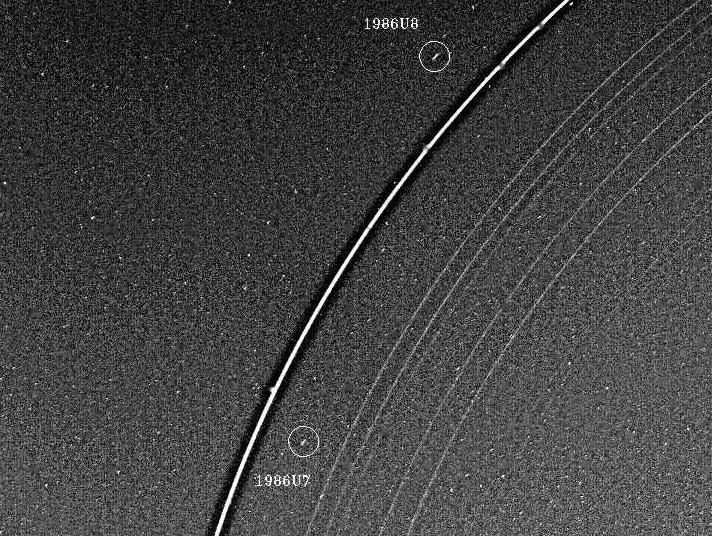

Uran, Shepherd Satellites, (Cordelia (1986U7) and Ophelia (1986U8)
The discovery of two shepherd satellites has advanced our understanding of the structure of the Uranian rings. The moons, Cordelia (1986U7) and Ophelia (1986U8), are seen here on either side of the bright epsilon ring; all 9 of the known Uranian rings are also visible. The epsilon ring appears surrounded by a dark halo as a result of image processing; occasional blips seen on the ring are also artifacts. Lying inward from the epsilon ring are the delta, gamma and eta rings; the beta and alpha rings; and finally the barely visible 4, 5 and 6 rings. The rings have been studied since their discovery in 1977.
Cordelia - Uranus VII
Cordelia is the innermost of
Uranus's known satellites:
orbit: 49,752 km from Uranus
diameter: 26 km
mass: ?
Cordelia is a daughter of Lear in Shakespeare's King Lear.
Discovered by Voyager 2 in 1986.
Cordelia appears to be the inner shepherding satellite for
Uranus's Epsilon ring.
Cordelia and Ophelia orbit inside the synchronous orbit radius.
Ophelia - Uranus VIII
Ophelia is the
second of Uranus's known satellites:
orbit: 53,764 km from Uranus
diameter: 32 km
mass: ?
Ophelia is the daughter of Polonius in Shakespeare's Hamlet.
Discovered by Voyager 2 in 1986.
Ophelia appears to be the outer shepherding satellite for
Uranus's Epsilon ring.
(Courtesy NASA/JPL)